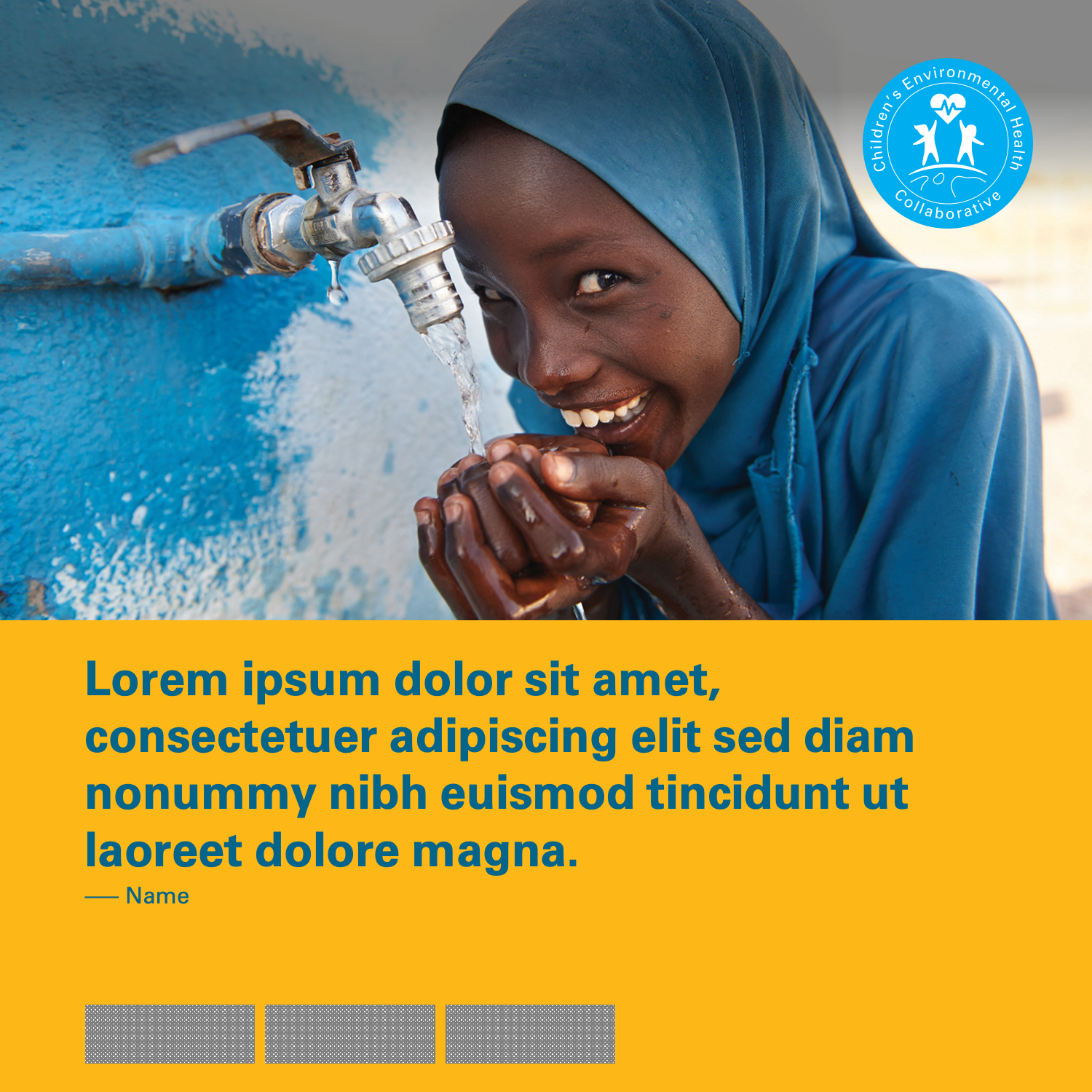Spread the message
Help spread awareness about the importance of children’s environmental health using this advocacy toolkit. These messages aim to encourage collective action, policies and more protection for children against environmental degradation and climate change.
More than ONE MILLION children under the age of five die every year due to unhealthy environments. The health, development, and well-being of many more children, including adolescents, are harmed by exposure to dangerous combinations of climate and environmental shocks.
Make a public commitment to your community and the world that you will take action to prioritize children’s environmental health. Your action will become an example for others.
Here’s how it works:
- Take a photo of yourself or of the action you are taking as part of your commitment.
- Add your photo to this social media card, add text describing your commitment and share it on your social media.
- Tell a friend about this initiative and encourage them to make a public commitment of support.
Template social media card
Share on your social media
Videos on children's environmental health risks
Influence awareness on children's environmental health risks
Key messages
Write to your decision makers in your community or host activities that help spread awareness by including these messages:
Children are physically, socially and economically more vulnerable and less able to survive shocks from floods, droughts, severe weather and heatwaves.
Children are more vulnerable physiologically to toxic substances such as lead and other forms of pollution, affecting them at even low levels of exposure.
Children are more at risk of death, compared with adults, from diseases that are likely to be exacerbated by pollution and climate change, such as pneumonia, malaria and diarrhoea.
Any deprivation caused by climate and environmental degradation at a young age can result in a lifetime of lost opportunity.
Youth engagement opportunites
Empowering youth to be agents of change can help advance the agenda on children's environmental health with them and for them. Below are opportunities for youth to engage on this issue.
Voices of Youth
Voices of Youth is UNICEF's digital community FOR YOUTH, BY YOUTH. U-Report is UNICEF's flagship digital platform started in 2011, to engage young people in programme priorities, emergency response and advocacy actions. We have now combined the two platforms to better support adolescent, youth, and community participation; and works as a tool to share information, raise awareness, and collect quantifiable data on specific areas that impact children.
International Federation of Medical Students Associations (IFMSA)
The International Federation of Medical Students Associations (IFMSA), founded in 1951, is one of the world’s oldest and largest student-run organisations. It represents, connects and engages every day with an inspiring and engaging network of 1.3 million medical students from 139 NMOs in 130 countries around the globe.
Chemicals and Waste Youth Platform Major Group for Children and Youth (MGCY)
The Major Group for Children and Youth is the UN General Assembly-mandated and self-organised mechanism for young people to meaningfully engage in certain UN processes.
It acts as a bridge between young people and the UN system in order to ensure that their right to meaningful participation is realized. They do so by engaging formal and informal communities of young people, in the design, implementation, monitoring, follow-up and review of sustainable development policies at all levels.
